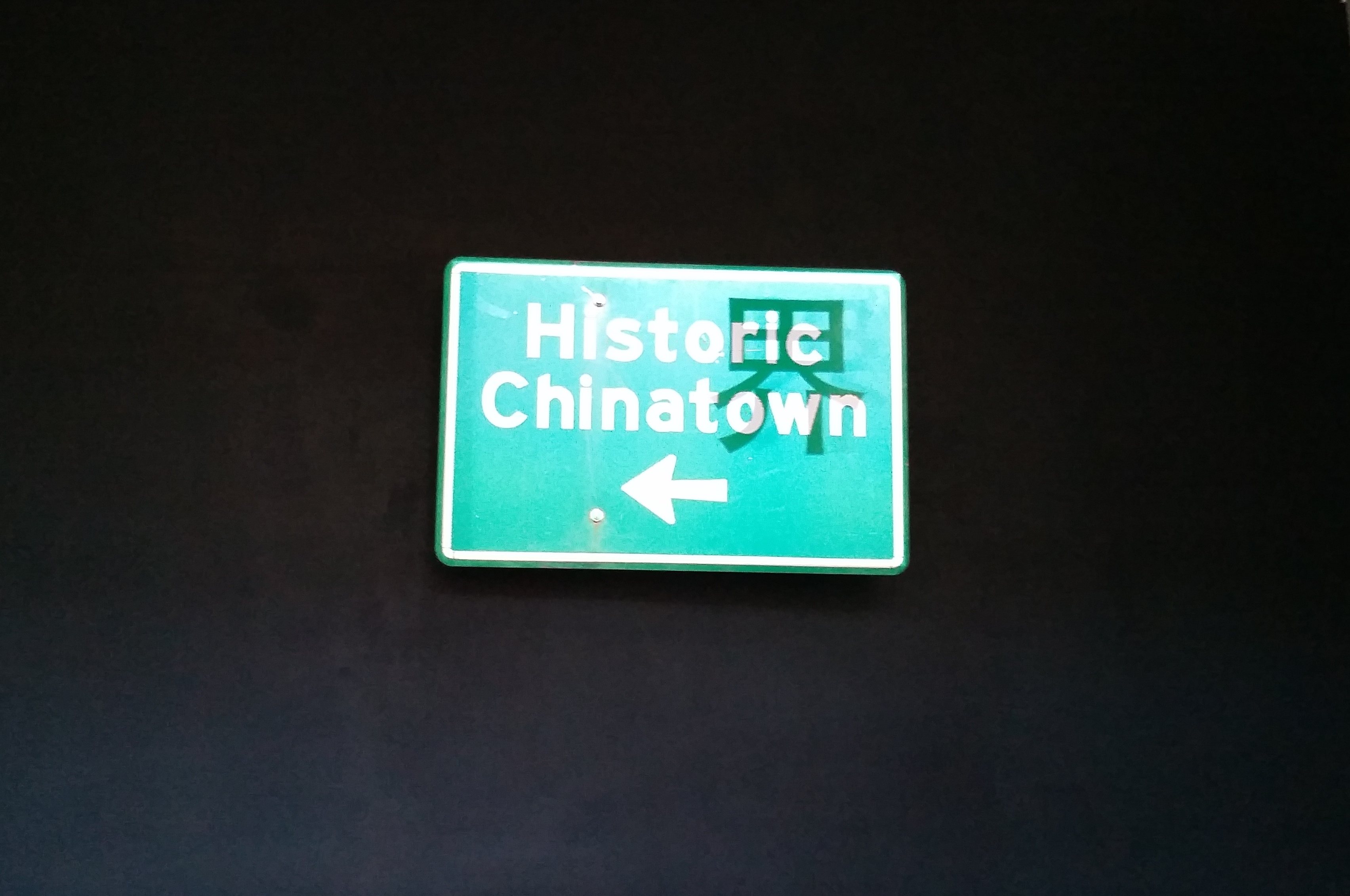Transgression/Cantosphere: Delineation of the “Other” and the Power Struggle of Language
As I walked down East Georgia Street, I realized I had walked past these stalls of dried herbs and fresh produce before (the familiar scent of ginseng reminding me of certain areas of Richmond malls and my own childhood). I had walked past these stalls several times, in fact, lost among the sounds of a language I could not understand while trying to meet my friend at her favourite Hong Kong style establishment—the Maxim’s Bakery Restaurant. This time, however, I passed the restaurant and entered a different Cantonese space.
Centre A is a small, quiet gallery, and it dedicates its space to its current exhibit, 越界/粤界 (TRANSGRESSION/CANTOSPHERE) by the arts company Hong Kong Exile in collaboration with linguist Zoe Lam and artist Howie Tsui. This multimedia installation protests and highlights the threat of Mandarinisation globally and, more locally, in Vancouver itself. As I read through the exhibit’s information provided online, I cannot help but be reminded of the fact that Mandarin classes in high school were simply labeled as “Chinese” courses or the numerous times I had been told that learning Mandarin would be more helpful in the job market than Cantonese would (a fact that my Cantonese speaking friends have encountered like a brick wall).
The exhibit begins with a street sign that reads “Historic Chinatown” with the alternating characters for “Transgression” and “Cantosphere” projected over it. Entering into the space behind the black wall that bears this sign, I felt a sense of unease overcome me. The room was dark, which emphasized the self-contained world that the installation was painting the Cantosphere as—a separate, autonomous culture. The emptiness of the gallery juxtaposed with the rigidity of the walls created a space that seemed to distinctly and warily guard its limited area (or freedom). I who did not understand the language became a foreign body. Much as I had experienced walking through the streets of Chinatown, I was immediately set apart as the “Other” just by the audio of Cantonese puns playing in conjunction with the scrolling characters on the projection screen. Even with the translations in hand, I had difficulty locating which sets of phrases were being presented at first. The ghostly images of the characters, the yellow light, and the morphing font of the homophones instilled a sense of wariness in myself, as I am removed from the cultural context of these symbols.
Perhaps it is telling then, that I became more focused on the translations made available and then drawn to the English written along the walls. Here was a series of phrases that are difficult to discern at first glance because of the lack of punctuation and spaces between words, and yet I took the time to read them because I understood them. They became my comfort zone in this space. The ridiculous English statements wrapped around the outer walls of the installation—a peripheral gibberish to the cultural center of this space, and yet they became equally as loud as the blaring Cantonese audio in my own mind simply because I understood the words.
The 越界/粤界 (TRANSGRESSION/CANTOSPHERE) installation plays well with the idea of the “Other” as well as the importance of language. The languages that are accepted, understood, and deemed important directly impact the voices that are heard. Even in this space dedicated to Cantonese language and culture, my own ignorance of it deafened myself to this voice, ultimately delineating spaces as “Other.”
